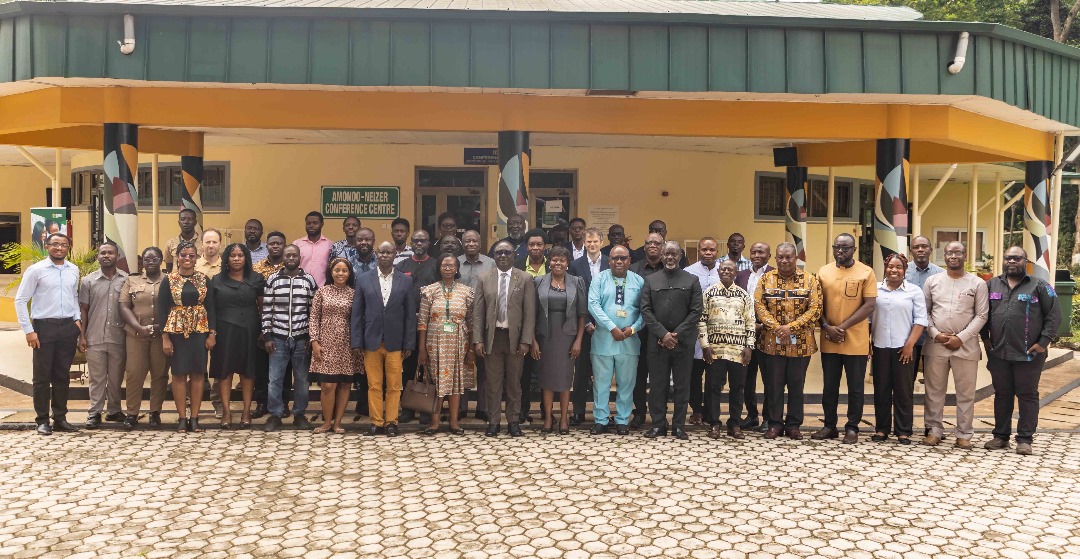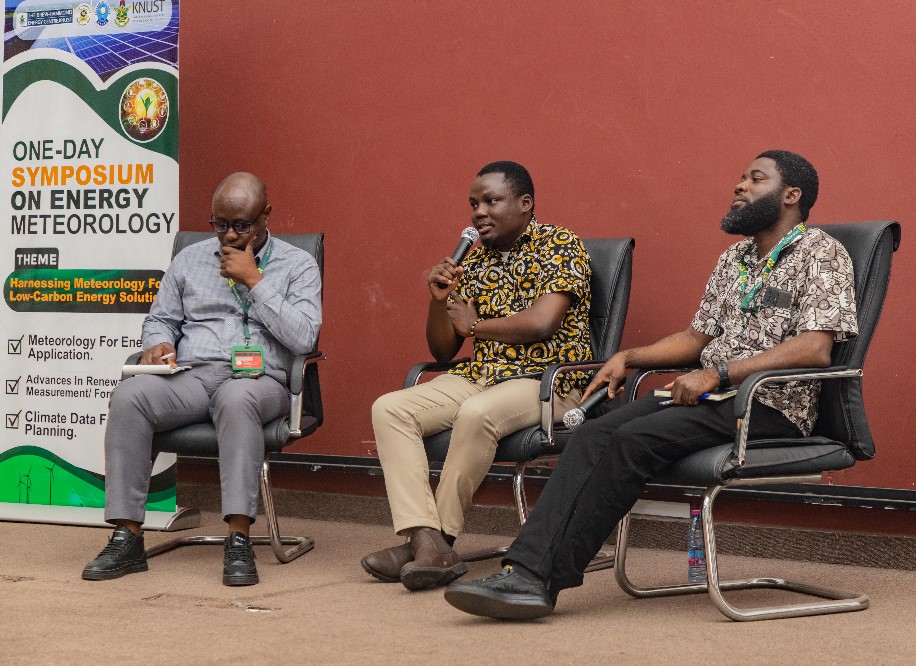Final Year Undergraduate Project Work defence and Poster Presentation Session

The graduating class of 2023 from the Department of Meteorology and Climate Science at the Kwame Nkrumah University of Science and Technology (KNUST) ended their four-year undergraduate studies with a noteworthy Poster Presentation Session. This event took place at the esteemed Aboagye-Menyeh Complex within the College of Science at KNUST on the 29th of August 2023. The session featured an impressive array of research projects, each designed to advance our understanding of climate-related issues and contribute to the enhancement of climate capacity. These projects also aimed to foster greater integration of climate considerations into both national and international policies. In the following sections, we provide highlights of a selected number of these impactful projects that were presented during this event.
The project work of Abdul Malik Donkoh, Mary Darkwaa Ntim, and Ameyaw Opoku Wonder assessed the impact of extreme heat on human health within the Ghanaian context.
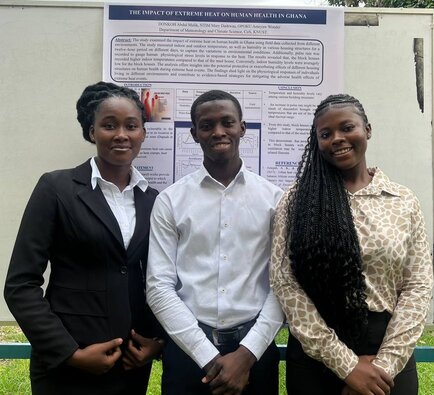
The study measured indoor and outdoor temperature, as well as humidity in various housing structures for a twelve–hour period on different days, to capture the variations in environmental conditions. Additionally, pulse rate were recorded to gauge human physiological stress levels in response to the heat. The outcomes of their work unveiled notable distinctions between housing structures constructed from cemented blocks and those made of mud. Specifically, the study revealed that indoor temperatures in cemented block houses tended to be significantly higher compared to their mud counterparts. Additionally, the research observed that indoor humidity levels were consistently lower in cemented block houses than in mud houses. These findings provide valuable insights into the potential protective or exacerbating effects of different housing structures on human health during periods of extreme heat. Moreover, the research sheds light on the physiological responses of individuals residing in diverse environments, thus contributing to the development of evidence-based strategies for mitigating the adverse health impacts associated with extreme heat events.
In their study, Owusu Ansah Elizabeth, Owusu Bemmah Judith, and Ibrahim Ashraf Ansigi undertook an analysis of anticipated alterations in the frequency of heavy precipitation days within the context of Ghana, employing the IPCC's RCP4.5 future scenario. This analysis commenced with an assessment of the performance of two prominent CMIP5 models, specifically the MPI-ESM-MR and NorESM1-M models.
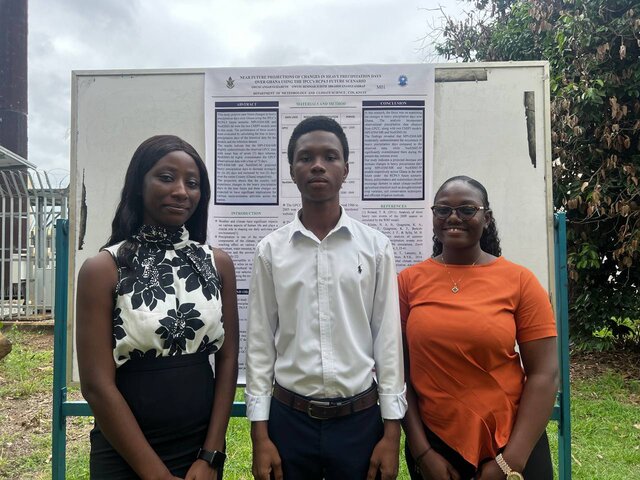
The primary objective was to gauge their respective biases in projecting heavy precipitation days, serving as a crucial precursor to the subsequent projection. The outcomes of the model evaluation exercise revealed distinct characteristics for both models. Notably, the MPI-ESM-MR model exhibited a modest underestimation of observed precipitation, manifesting as a mean bias of seven (7) days. In contrast, the NorESM1-M model displayed a substantial overestimation of observed precipitation, with a bias of 73 days. These findings underscore the importance of meticulous model selection when conducting climate projections. Subsequently, the MPI-ESM-MR and NorESM1-M models were utilized to project future trends in heavy precipitation days across the entirety of Ghana. The projections indicate that, on average, heavy precipitation days are likely to decrease by approximately six (6) days when employing the MPI-ESM-MR model. In contrast, the NorESM1-M model suggests an increase of approximately two (2) days in heavy precipitation days throughout the country. These findings signal imminent shifts in the patterns of heavy precipitation, underscoring the need for comprehensive preparation and mitigation strategies. The implications of these projected changes in heavy precipitation are far-reaching, impacting various socio-economic sectors within the nation. Therefore, it is imperative that policymakers and stakeholders take proactive measures to address these impending alterations. Encouraging the adoption of climate-resilient agricultural practices, such as the cultivation of drought-tolerant crop varieties, the implementation of soil conservation techniques, and the utilization of efficient irrigation methods, should be prioritized as essential steps to enhance the nation's resilience in the face of evolving climatic conditions. These measures will be crucial in safeguarding the sustainability and productivity of Ghana's agricultural sector and mitigating potential socio-economic challenges arising from shifting precipitation patterns.
Peter Kwasi Forson, Joycelyn Adjekum and Adjei Daniel Akpor estimated the rainy season onset and cessation in West Africa using cumulative metrics. The primary objective of this study was to validate the datasets provided by CHIRPS and GPCC.
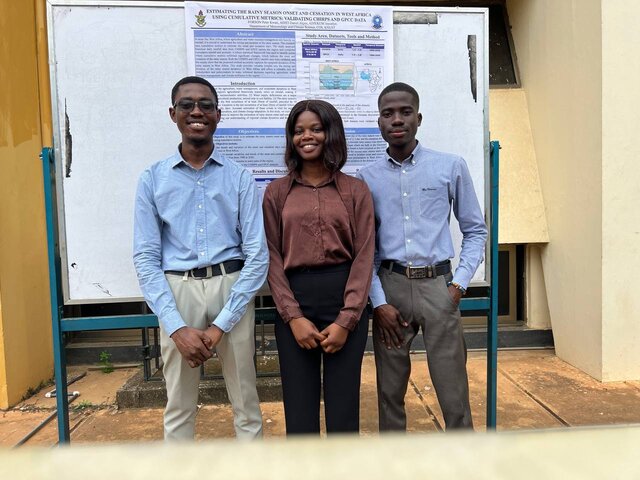
To achieve this, the research team meticulously scrutinized historical daily rainfall records encompassing the entire West African territory. Subsequently, cumulative rainfall metrics and their respective anomalies were computed and analyzed. To identify periods of onset and cessation of the rainy season, a robust statistical framework was employed. This method facilitated the identification of significant alterations within the cumulative rainfall metrics, thereby enabling the precise determination of the rainy season's onset and cessation. The findings of their study unequivocally demonstrated that the proposed methodology accurately captured the temporal dynamics of the rainy season in West Africa. This empirical study not only contributes valuable insights into the temporal aspects of the rainy season dynamics in West Africa but also serves as an indispensable tool for stakeholders and policymakers. It offers a valuable tool for stakeholders and policymakers to make informed decisions regarding agriculture, water resource management, and climate resilience in the region.
Osei-Tutu Desmond, Belson Gilbert Edwin, and Nartey Amos conducted an assessment of indoor air pollutant levels and their implications for human health within the KNUST campus. The research encompassed the measurement of carbon monoxide (CO), carbon dioxide (CO2), and ammonia (NH3) concentrations, alongside the assessment of particulate matter in three size categories: PM1, PM2.5, and PM10.
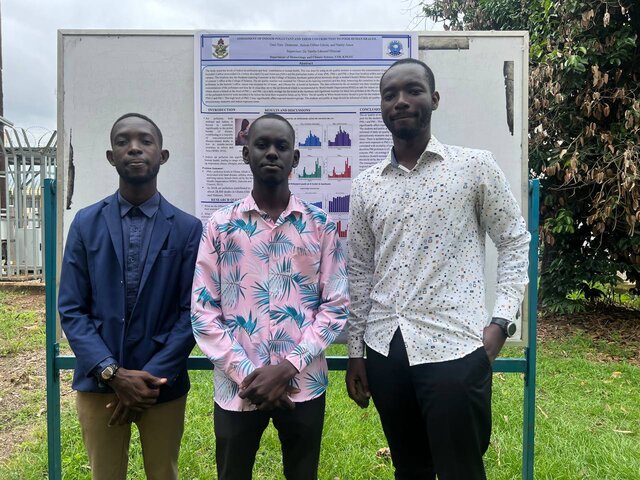
These measurements were collected from various locations within KNUST campus using low-cost air quality sensors.The study's primary objective was to evaluate these pollutant concentrations against the air quality standards set forth by the World Health Organization (WHO) to gauge their compliance with recommended safety levels. The findings of this investigation revealed notable disparities in pollutant concentrations across different areas of the campus. Remarkably, all measured gaseous pollutants (CO, CO2, and NH3) were found to be within the WHO-established safety thresholds for all the locations tested. However, the concentrations of particulate matter pollutants (PM2.5 and PM1) at the Ayeduase location exceeded the WHO thresholds, suggesting that the air quality in this particular area is notably subpar. Consequently, residents and inhabitants of the Ayeduase area are advised to take proactive measures to mitigate pollution levels in the region. To this end, the researchers proposed that the university management and relevant policy stakeholders institute measures aimed at improving and sustaining the quality of indoor air for the well-being of all campus occupants.
Dickson Paintsil Emmanuel, Dortey Berlinda Kai Mansah and Ababio Emmanuella performed a comparative analysis of soil temperature estimation across fallow and grassland ecosystems using Model Simulations, Observational, and ERA Reanalysis Datasets.
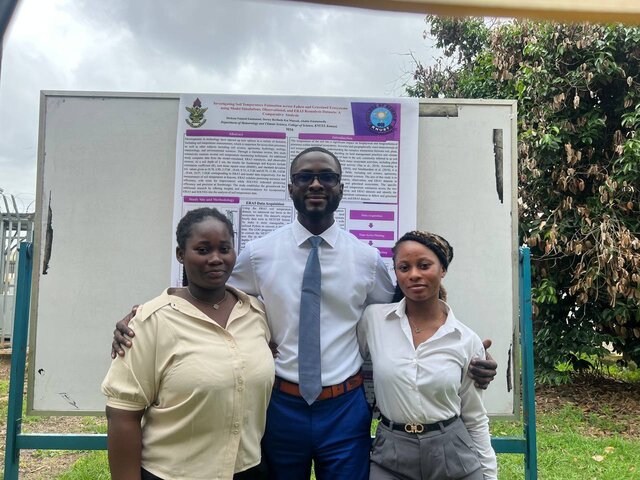
The purpose of this study was to evaluate the potential replacement of in-situ soil temperature monitoring methods with model-predicted measurements and/or employing ERA5 reanalysis data throughout fallow and grassland ecosystems. The research included a thorough evaluation of the available literature on soil temperature measurement methods. In addition, comparison analysis research was done between observed data, ERA5 reanalysis data, and model-simulated data to evaluate the performance of observed data versus model-simulated and ERA5 reanalysis data. The results obtained from the statistical plots for Sumbrungu and Kayoro at 3cm soil depth for both ERA5 and model were (0.79, 11.80, 3.02), (0.64, 10.97, 3.58) and (0.78, 4.90, 2.57), (0.69, 9.75, 4.31). The above values denote the correlation coefficient(R), the root mean square error (RMSE) and the standard deviation(σ). These results indicated that ERA5 offered promising accuracy and efficiency for soil temperature measurement at Kayoro, with the potential to improve its estimation, while SOLVEG indicated promising efficiency and precision in soil temperature estimation at Sumbrungu. Furthermore, considerations and recommendations regarding the employment of ERA5 and SOLVEG have been presented. This study provides useful insights into the integration of ERA5 and SOLVEG into soil temperature data, laying the groundwork for future advances.
Congratulations Class of 2023 for the successful project defense. The Department wish you the best of the journeys ahead, and hope that you influence the local and global communities positively.
BEST WISHES!!!
